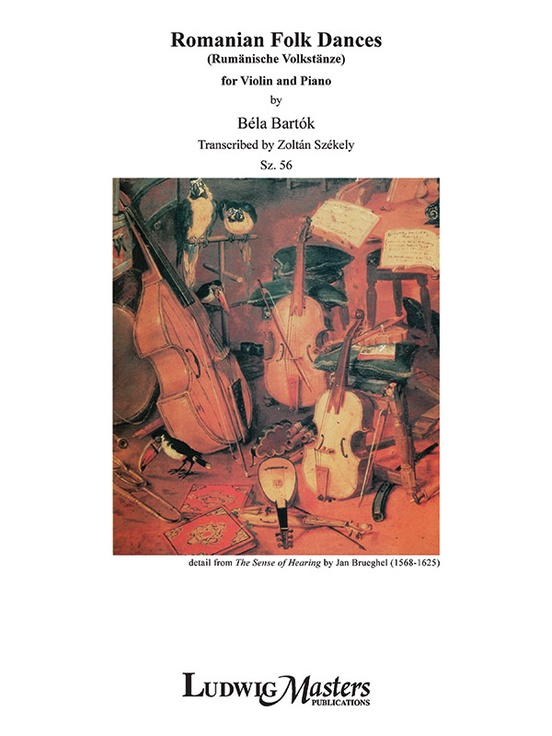
Happy Present Meet

Bartok Romanian Folk Dances, Sz. 56 for Violin and Piano
(Rumanische Volkstanze)
In the years preceding World War I, Hungarian composer, pianist, and ethnomusicologist Béla Bartók (1881-1945) took trips to the Transylvanian region to explore the musical traditions of the Romanian population. Following a two-year depression caused by the war, as well as some professional setbacks, he returned to composition. The Romanian Folk Dances, Sz. 56, emerged in 1915, bearing a strong influence from his experiences as an ethnomusicologist. They comprise 6 dances, all based on folk tunes that Bartók had recorded and transcribed. In 1917, he arranged a version for full orchestra. Hungarian violinist and composer Zoltán Székely (1903-2001) transcribed these six short movements for violin and piano in 1926, which are offered here in this reprint edition.
Movements:
1. Joc cu bâta (Stick Dance),
2. Brâul (Sash Dance),
3. Topogó / Pê-loc (In One Spot),
4. Bucsumí tánc / Buciumeana (Dance from Bucsum),
5. Poarga româneasca (Romanian Polka),
6. Aprózó / Maruntel (Fast Dance).
제1차 세계 대전 발발 전, 헝가리 작곡가이자 피아니스트, 민족음악학자인 벨라 바르토크(1881-1945)는 루마니아 사람들의 음악 전통을 탐구하기 위해 트란실바니아 지역을 여행했습니다. 전쟁으로 인한 2년간의 불황과 몇 가지 직업적 좌절을 겪은 후, 그는 작곡으로 돌아왔습니다. 민족음악학자로서의 그의 경험에서 강한 영향을 받은 루마니아 민속 무곡, Sz. 56은 1915년에 발표되었습니다. 이 곡은 바르토크가 녹음하고 편곡한 민요를 기반으로 한 6개의 무곡으로 구성되어 있습니다. 1917년에 그는 풀 오케스트라 버전을 편곡했습니다. 헝가리의 바이올리니스트이자 작곡가인 졸탄 세케이(1903-2001)는 1926년에 이 6개의 짧은 악장을 바이올린과 피아노를 위해 편곡했으며, 이 곡들은 이 재판본에 수록되어 있습니다. 동작: 1. Joc cu bâta(스틱 댄스), 2. Brâul(새시 댄스), 3. Topogó / Pê-loc(In One Spot), 4. Bucsumí tánc / Buciumeana(Bucsum의 댄스), 5. Poarga româneasca(루마니아 폴카), 6. Aprózó / Maruntel(빠른 댄스).
편곡자 Szekely, Zoltan
작곡가 Bartok, Bela (1881-1945)